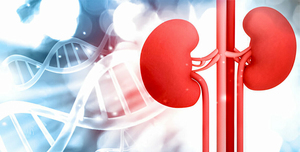The Future of Renal Care: Making the Most of Stem Cell Therapy for Kidney Transplantation
الجسم
Kidney illness is becoming a bigger problem for people's health throughout the world. It affects millions of people and strains healthcare systems since it is long-lasting and has many consequences. End-stage renal disease (ESRD) is the last irreversible stage of chronic kidney disease (CKD). At this point, the kidneys can no longer balance the body's fluids and waste. Dialysis or kidney transplantation are the usual treatments for these kinds of patients. Dialysis may help people live longer, but it also makes their lives much worse and comes with a lot of health hazards. Conversely, kidney transplantation has a greater survival rate and a better quality of life. Still, it is restricted by a severe lack of donor organs and the difficulties of immunological rejection and permanent immunosuppression. In this situation, stem cell kidney transplant has become a beacon of hope because it might change how we do kidney transplants and care for kidneys.
Stem Cells: A New Beginning in Regenerative Medicine
Stem cells are cells that haven't yet been specialized and can make more of themselves and turn into other kinds of cells. They are great instruments for regenerative medicine because of their amazing potential. Pluripotent stem cells and adult stem cells are the two primary kinds of stem cells necessary for kidney disease studies. Embryonic stem cells (ESCs) and induced pluripotent stem cells (iPSCs) are two types of pluripotent stem cells. They may turn into any form of cell in the body. Adult stem cells, like mesenchymal stem cells (MSCs), are multipotent, which means they may turn into a small number of tissues. They also have potent anti-inflammatory and immunomodulatory effects.
Conclusion
Stem cells may be used in kidney transplants in many different ways. Researchers are looking at using them to repair damaged kidney tissue, change the immune system to stop rejection, and even make bioengineered kidneys for transplant. Each method has much potential to help with the problems while treating ESRD.









تعليقات